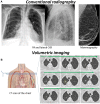Analysis of Perceptual Expertise in Radiology - Current Knowledge and a New Perspective
- PMID: 31293407
- PMCID: PMC6603246
- DOI: 10.3389/fnhum.2019.00213
Analysis of Perceptual Expertise in Radiology - Current Knowledge and a New Perspective
Erratum in
-
Corrigendum: Analysis of Perceptual Expertise in Radiology - Current Knowledge and a New Perspective.Front Hum Neurosci. 2019 Aug 13;13:272. doi: 10.3389/fnhum.2019.00272. eCollection 2019. Front Hum Neurosci. 2019. PMID: 31456672 Free PMC article.
Abstract
Radiologists rely principally on visual inspection to detect, describe, and classify findings in medical images. As most interpretive errors in radiology are perceptual in nature, understanding the path to radiologic expertise during image analysis is essential to educate future generations of radiologists. We review the perceptual tasks and challenges in radiologic diagnosis, discuss models of radiologic image perception, consider the application of perceptual learning methods in medical training, and suggest a new approach to understanding perceptional expertise. Specific principled enhancements to educational practices in radiology promise to deepen perceptual expertise among radiologists with the goal of improving training and reducing medical error.
Keywords: attention; expertise; gist; holistic processing; perceptual learning; radiology; visual perception; visual search.
Figures








References
-
- Alexander R. G., Zelinsky G. J. (2009). The frankenbear experiment: looking for part-based similarity effects on search guidance with complex objects. J. Vis. 9 1184–1184. 10.1167/9.8.1184 - DOI
-
- Alzubaidi M., Balasubramanian V., Patel A., Panchanathan S., Black J. A. (2010). “What catches a radiologist’s eye? A comprehensive comparison of feature types for saliency prediction,” in Proceedings of the Medical Imaging 2010: Computer-Aided Diagnosis, (Bellingham: SPIE; ).
Publication types
LinkOut - more resources
Full Text Sources
Other Literature Sources
Research Materials

